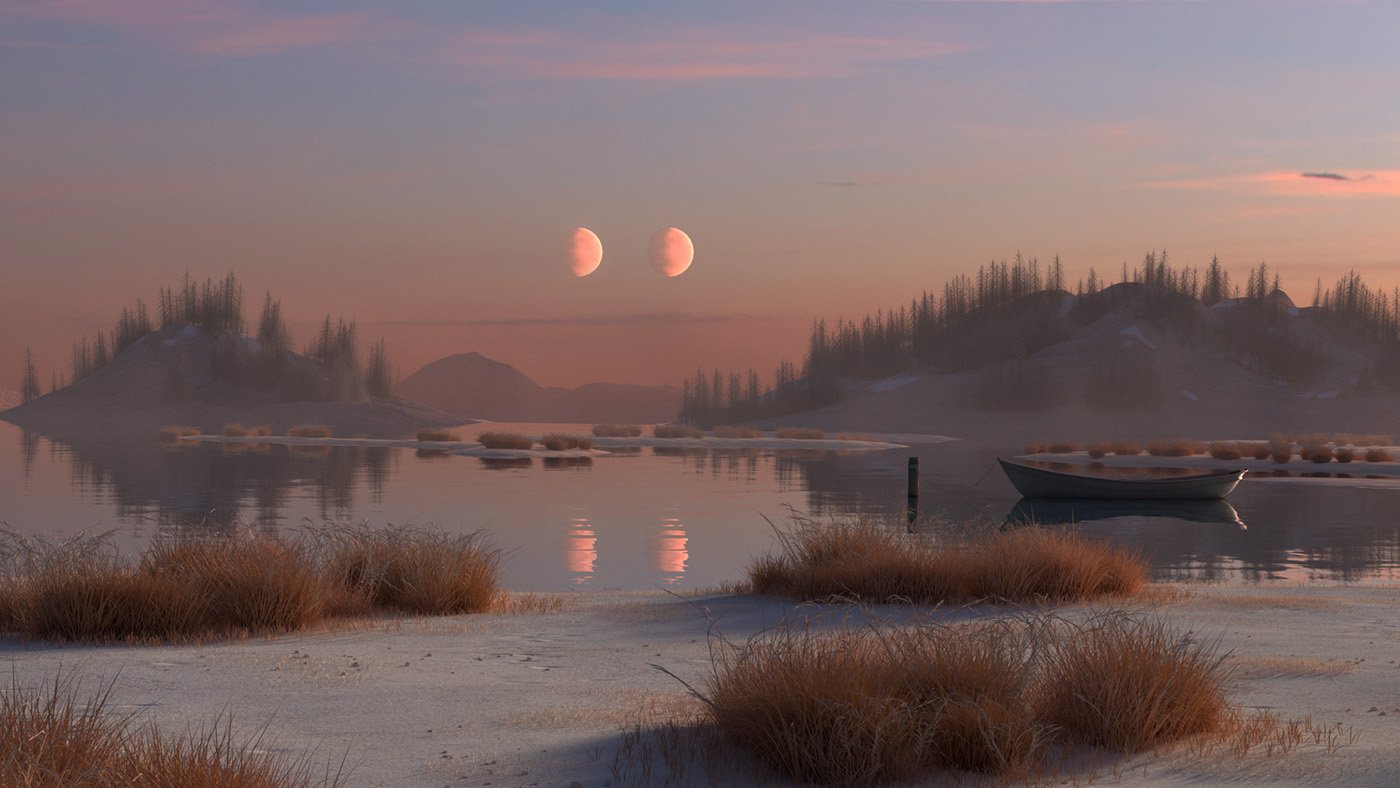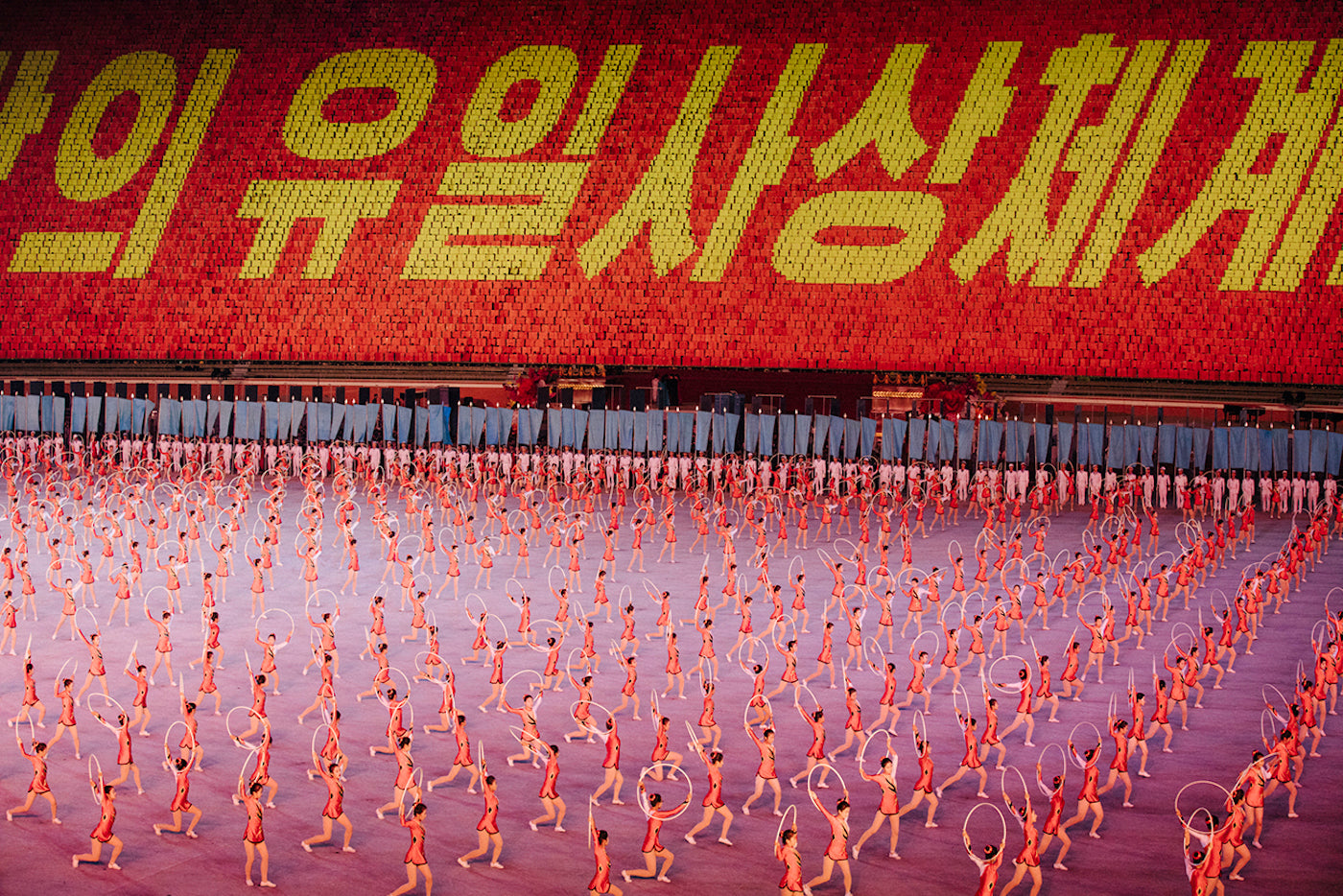
Going Inside The Sound With Universal Everything
Meet the London-based studio who create multi-sensory synaesthetic experiences
If you could see sounds, which songs or pieces of music would you most like to explore? Given the choice, most of us can only speculate on what we might encounter. A cavalcade of kaleidoscopic, geometric shapes, and colors bursting in response to an Aphex Twin record. Winding architectural paths forged when listening to Miles Davis or maybe Kraftwerk inspired oscillation ripples moving through the air.
Saturdays might be light blue and Tuesdays yellow. The name Michael could evoke a metallic sensation whereas the strumming of a guitar might stimulate the vision of a waterfall of butterflies
For Matt Pyke, Creative Director of Universal Everything, a London-based digital art and design collective, he'd immerse himself in "the flow of the lyrics and typography of Exhibit C by Jay Electronica." As someone who experiences the sensory phenomenon called synaesthesia, speculation plays no part. The shape of sounds, movement of rhythms, and the journey through a song are instinctive visual responses when he listens to music.
When listening to this track, Matt Pyke of Universal everything visualizes "the flow of the lyrics and typography" as part of the synaesthesia he experiences. What do you visualize?
Our experience of color–as it's usually understood–is visual. We use color to distinguish objects and symbols, or in the case of artists, to bring a picture to life. We can recall colors in our mind's eye and use them to associate certain emotions and moods. But for people who experience synaesthesia, color takes on a more complex, multi-sensory role associated with sound, texture, or shape. Saturdays might be light blue and Tuesdays yellow. The name Michael could evoke a metallic sensation whereas the strumming of a guitar might stimulate the vision of a waterfall of butterflies.
The 360° worlds created by Universal Everything are inspired by the perceptual phenomenon synaesthesia and provide us with a multi-sensory audio-visual experience. Use your VR headset or mouse and take a look around. (Video: Voices by Universal Everything)
Like Matt, those who have synaesthesia, experience a fusion of the senses where stimulation of one sensory or cognitive pathway prompts another. Exactly how the condition works is still a mystery but it affects around one in every 2000 people. For those who don’t have it, it's an abstract but intriguing concept that can be difficult to grasp.
"We’ve explored the phenomenon of synaesthesia-seeing and feeling sounds. Now with today’s graphics technology, we are able to step into the screen to immerse ourselves in audiovisual environments-to step inside the sound"
Thanks to Universal Everything, however, we can now go some way to experiencing it, as Matt explains. "Since our audio-visual DVD, Advanced Beauty, we’ve explored the phenomenon of synaesthesia-seeing and feeling sounds. Now with today’s graphics technology, we are able to step into the screen to immerse ourselves in audiovisual environments–to step inside the sound."
Visualizing sensations triggered by sounds allows the viewer to explore a multisensory space in ways only achievable in 360º. (Video: Totems by Universal Everything)
Embracing the potential of Virtual Reality (VR), the Inside the Sound project is a continuation of Universal Everything's exploration into new forms of synaesthetic experience. Through a series of immersive 360º environments that take the form of an infinitely looping audiovisual creation, each of the six worlds visualizes the sensations triggered by its sounds, allowing the viewer to explore a multisensory space.
There is huge potential in VR as a therapeutic medium, enabling people to step into their fears and build resilience-from vertigo, to stage fright to crowds
Each film is soundtracked by long-term Universal Everything collaborator Simon Pyke, who wrote a series of looping soundtracks, each using a technique called Shepard Tones–an auditory illusion giving a sense of infinity rising pitch. These soundtracks influenced the visual aesthetic and drove the movement, creating an intuitive visualization of sound.
A Shepard Tone, named after Roger Shepard, is a sound consisting of a superposition of sine waves separated by octaves. When played with the bass pitch of the tone moving upward or downward, it is referred to as the Shepard Scale. This creates the auditory illusion of a tone that continually ascends or descends in pitch, yet which ultimately seems to get no higher or lower. (Video: Creatures by Universal Everything)
One of the films visualizes the sound of Voices and looks like the inside of a four-dimensional candy factory. Pastel pink, orange, purple, and yellow shapes morph, roll, spiral, and twist alongside each other. Totems show shapes piled on top of one another repeatedly in time with an electronic beat. If you push upwards with your mouse or look up with a VR headset on, you could almost be inside a futuristic fruit machine as the pillars shuttle past you. Planes are enough to give anyone working in Air Traffic Control a heart attack, whereas Creatures lets you discover plantlike beings crawling in and out of the screen as you navigate around.
The next step is social VR. Sharing the experience, seeing your friends inside, locally or remotely. The headsets need to become lighter and more portable but this is evolving every year. With the improvement of haptic responses, you'll feel the virtual world
As well as Inside The Sound, Universal Everything has created a number of immersive multi-sensory experiences and directed new forms of moving image. (Video: Planes by Universal Everything)
As well showcasing Universal Everything's expertise at digital art, their use of VR to explore synaesthesia definitely hints at how the technology could be used in future. The potential of the medium to aid psychological and occupational therapy is already being put to use and is something that excites Matt. "There is huge potential in VR as a therapeutic medium, enabling people to step into their fears and build resilience-from vertigo, to stage fright to crowds."
The studio has worked with names such as Radiohead, Hyundai, Microsoft, Chanel, and The Barbican Centre. (Video: Bursts by Universal Everything)
The increasing popularity of VR brings the common criticism of it being an isolated activity. Is it about escaping reality or making it better? For Matt, it's the latter and on hearing his insight it's hard not to get a bit excited about what's to come. "The next step is social VR. Sharing the experience, seeing your friends inside, locally or remotely. The headsets need to become lighter and more portable but this is evolving every year. With the improvement of haptic responses, you'll feel the virtual world–the texture of the ground, the weight of an object, or even the impact of a punch!"
To view more of Universal Everything's work visit universaleverything.com.


